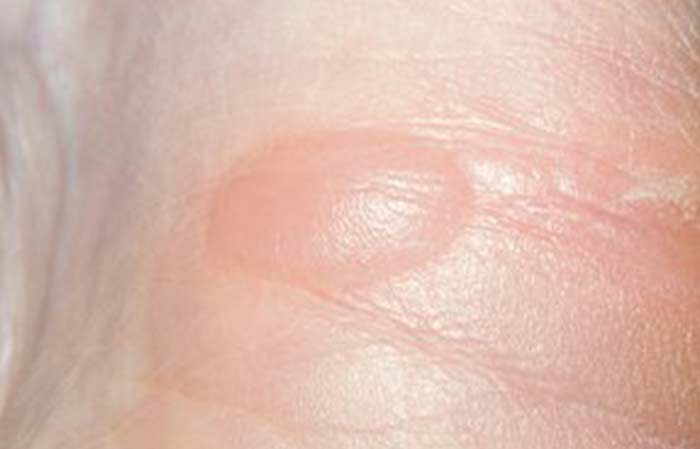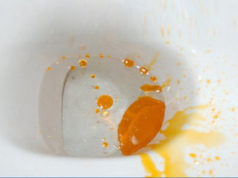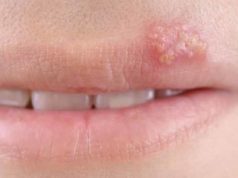There are many conditions that may cause blisters to appear on the female reproductive parts. This article will focus on the causes and solutions to blisters and any other aspects of the topic.
Can you get blisters on your privy?
Yes, you can get blisters on various parts of your reproductive organ. The blisters look no different from the ones you would get on the other parts of the body due to burns, friction and infections.
They may develop a clear liquid inside them or have pus mixed with some blood. It all depends on the causes of the blisters.
In most women, the first signs of the blisters can be felt some hours or days before the blisters finally appear. This stage is referred to as the prodrome stage and its duration is determined by the cause of the blisters and the health of individual.
The prodrome stage can be characterized by various symptoms including tingling and burning sensations that can be quite painful. Some people may even experience fever during this stage.
Anyone can get blisters no matter their age or health condition. Even when you are not active, you might still get blisters those hidden areas
Not all blisters will hurt unless you touch or squeeze them. Some may not even be noticed until you feel the pain during urination or sexual intercourse.
The shape of each blister will vary according to its cause although most would either be circular or oval in shape. If caused by other aspects other than a sexually transmitted disease, the blisters would feel like a gel bubble and be clear in color.
Other times, they might look red to a dark color with the darkness coming in the advanced stages of the blisters. Unless caused by a sexually transmitted disease, the blister should not be itchy, filled with pus or have a bad odor. They are also generally expected to be dry.
On the other hand, a blister caused by a sexually transmitted disease will be itchy, have pus and would also likely have a bad smell to it. The shape of blisters caused by a sexually transmitted disease also ranges from a cauliflower-like shape, flat or even raised. They might also be soft and moist and likely filled with pus.

What causes the Blisters?
The causes of the blisters range from physical causes such as friction to infections with diseases.
1. Blood blisters
Blood blisters in the genital area are a common occurrence especially when one’s age advances towards the 50s. If the blisters are only red in color and there is nothing more to them, then you have nothing to worry about since they will not be a symptom of a sexually transmitted disease or other condition.
These types of blisters can also be seen under the breasts and the wall of the chest besides the lips. They are caused by some of the normal changes that occur in the body including a thinning skin and changes in the tissues of the body.
If you notice this type of blisters and they are accompanied by other symptoms such as pain, burning or itching sensations and any form of bleeding or discharge, you should pay your doctor a visit to have a checkup done right away. This is because it would not be a simple case of the blisters but a sign of a developing health condition.
While age is the main cause of this type of blisters, you might have them while young simply out of the normal changes in the body. Again, unless there are some other bodily changes that come with the blisters, you have nothing to worry about.
2. Fever blisters
Fever blisters, which are also called cold sores, are painful sores whose cause is the HSV (herpes simplex virus). This type of blisters will appear on any part of the body although the most common locations on the body include the fingers, cheeks, nose, lips and mouth.
Fever blisters will last for about 10 days before they dry up. While they remain fresh, cold sores will be contagious and should thus be prevented from contact with healthy persons until they start forming a crust. In most cases, fever blisters will not be a health risk. However, in people with a compromised immune system, they may lead to more serious health consequences.
3. Herpes blisters
While herpes blisters can occur on any other part of the body, their occurrence is of our concern. These blisters are simply cold sores that may occur on any other part of the body.
The symptoms of cold sores include the following;
- Gums of a deep red color that are sensitive and swollen.
- The blisters are filled with fluids and have a red color. They have a burning sensation and an itch around them.
- Flu-like symptoms that often accompany swollen lymph nodes.
- In some cases, you may develop a high fever. If this occurs, quickly call a doctor as high fevers can be dangerous.
- The cold sores may start spreading to the rest of the body or to those around you; a case which will require medical intervention.
- The intensity of the pain in the sores may increase to the extent that you need painkillers.
Herpes simplex blisters are more often caused by the herpes simplex virus (HSV) type 1 than by type 2 of this virus. This is because the second type of this virus does not have many symptoms and is also less prevalent compared to the first type. The common procedure for blisters involves their formation, breaking and oozing followed by a yellow crust which sloughs off and leaves new skin below. This whole process will take anything between 7 to 10 days.
It is estimated that up to 90 percent of all people on the planet will get cold sores in their lifetime. However, only about 40 percent of those affected by the cold sores will experience a recurrence of the same. This is because, following the first attack, most people will develop immunity against this illness and specifically the cold sores. The severity of the sores is high at the first time one has the herpes simplex virus but reduces in the subsequent attacks. If it affects children, the herpes virus can cause severe symptoms.
Cases of the herpes simplex virus such as the blisters, while often mild, may be severe in the cases where one has a weak immune system such as in AIDS patients and those on medication. Also, having severe eczema can lead to the occurrence of cold sores on a large scale. Treatment of cold sores should be prompt as it may spread to the eyes to cause blindness, or to the brain and cause encephalitis and meningitis.
How herpes blisters spread
While the herpes simplex virus type 1 is the most common cause of cold blisters, type 2 of the herpes simplex virus is the one responsible for the genital warts and blisters. Both types of the herpes simplex virus can be transmitted through kissing, sharing objects such as utensils, razors and towels, oral sex and other forms of sexual contact. Open blisters on any part of the body are channels for the infection of diseases.
4. Friction sores inside
Friction sores inside your organ result from rough or dry sex. This occurs when you engage in sexual intercourse without enough lubrication. This can be due to lack of foreplay or a health condition which leads to dryness.
Sores from rough sex are similar to the blisters you get when you have a mild burn or friction on the body. Solving this issue is as simple as;
- Using artificial lubricants,
- Having enough foreplay before sex,
- Eating foods that increase fluids in the body.
5. Poor clothing choices
At times, the blisters can be caused by the type of clothing you will be wearing. Any clothes that rub against the skin are likely to cause blisters. Tight jeans, for example, will cause blisters if you do not have good quality underwear to prevent contact between the cloth and the skin.
The quality of the underwear is also of paramount importance when it comes to preventing blisters. First, if you wear underwear that is too thin, it will do little to prevent friction between your skin and your cloths. Secondly, if you wear clothes that are too thick, they will accumulate sweat thus making the skin more prone to friction when moving about. Most preferably, people use cotton underwear of medium thickness for the best results.
If you wear synthetic undergarments and bathing suits, you are likely to increase the moisture in certain parts of the body. These are prime breeding grounds for bacteria and fungi which may cause diseases and blisters. The same infections can be a result of the chemicals that are found in some swimming pools. The infections can also cause certain symptoms such as blisters to occur.
6. Poor nutrition
When you are stressed or are feeding on a poor diet, your body is likely to respond in certain unfavorable ways. Some people will have dry skin while others will experience blisters on various parts of the body especially the groin. In such a case, one would normally have a single blister that is very painful.
7. Work or fun activities
When riding a bicycle or a horse, you may develop blisters owing to the high level of friction experienced in the groin. While certain riding positions can help you prevent having blisters, you may also consider wearing enough padding before going out on your ride. Even better, learn to ride correctly to prevent the occurrence of these blisters.
8. Shaving
Because of the sensitivity of the genital area, shaving can easily irritate this region leading to blisters and soreness. Most people will have a few blisters after shaving especially when the blade came into contact with the skin and they have a sensitive skin. To prevent such a case;
- Know your skin and its level of sensitivity.
- The groin is very sensitive hence direct contact between the skin and the shaving blades should be limited.
- Always shave with the grain (shave towards the direction of the hair strands).
- Use quality aftershave to prevent blisters from emerging.
- Maintain hygiene in this region.
9. Chemicals
Chemicals may cause the inflammation of the privates leading to blisters in some people. Some of the most common substances with chemicals include;
- Contraceptives
- Perfumes
- Sprays
- Soaps and others.
If you take the following drugs, you might be in danger of an allergic reaction which may lead to blisters. They include;
- Dioxane
- Triclosan
- Sodium sulfate
- Parabens
Contact with these chemicals in soaps and fragrances will likely lead to allergic reactions. If you find out that your soap or other bodily substances case blisters or other symptoms, you need to change to fragrance-free or hypoallergenic options.
White blisters
If you have white blisters, then the likely cause of these blisters will be physical causes such as;
- Rigorous intercourse
- Friction from activities such as riding horses or bicycles
- Wearing clothes that are too tight without quality undergarments
- Shaving or styling pubic hair is likely to lead to the same issue of white blisters.
- Chemical irritants found in soaps and other such substances.
- Poor nutrition and high levels of stress.
Essentially, white blisters will be the result of given physical causes that disturb the skin in the groin in one way or the other.
Small painful sores
On the other hand, having small painful sores is a sign of a developing sexually transmitted disease such as yeast and herpes. Not all blisters will be accompanied by pain in the case of a sexually transmitted disease. In fact, some cases have painless blisters which only become inflamed when touched or pressed.
You can know that the blisters you have are caused by an STD if there are other symptoms to this disease. For example, you may have;
- Fever
- Pain during urination
- Pain during sexual intercourse
- A burning sensation
- Bleeding or oozing blisters
- Pain in the pelvic area
- Itchiness
- A discharge from the blisters
At times, you may have a painful blister whose cause is not a sexually transmitted disease. When you have an ingrown hair, you may experience this painful blisters and not be diseased. An ingrown hair occurs when the tip of the hair grows back and either touches the skin or grows right back into the skin. The groin area is particularly prone to ingrown hair with the result being sores and painful bumps or blisters.
How to get rid of the blisters and sores
There are many methods available to treat blisters and sores. The two main categories include home remedies and medical treatments.
Medical treatments
The exact type of medicine will depend upon the cause of the blisters. Commonly prescribed medicines include;
- Anti-itch drugs such as hydrocortisone
- Painkillers
- Antibiotics
- Antiviral medicine
- Antifungal medicine
- Antihistamine medicine
These medicine may be administered orally or as creams and any other methods seen fit by your doctor.
Home remedies
Some home remedies are quite effective when it comes to doing away with blisters and sores. They include;
1. Baking soda
No matter the cause of the blisters, baking soda remains one of the best solutions to blisters and sores. It has many properties which make it a great solution to soothing the pain, killing any infections, and drying the blisters up.
Directions
- Mix two teaspoons of baking soda in a glass of water.
- Wash the affected area with this mixture for about seven days.
2. Olive oil
Olive oil has antibacterial and soothing properties which make it a good remedy for the blisters and sores.
Directions
- Wash and dab dry the affected areas.
- Add a few droplets of virgin olive oil on a piece of cotton wool and dab the affected area.
These and many other remedies will help stop the itch and pain from the blister or sore while doing away with them. If you blisters are caused by a disease, they can also help in treating it.
References
- STD Facts – Genital Herpes. CDC
- Blood Blister: Symptoms, Causes, Diagnosis – Healthline.



